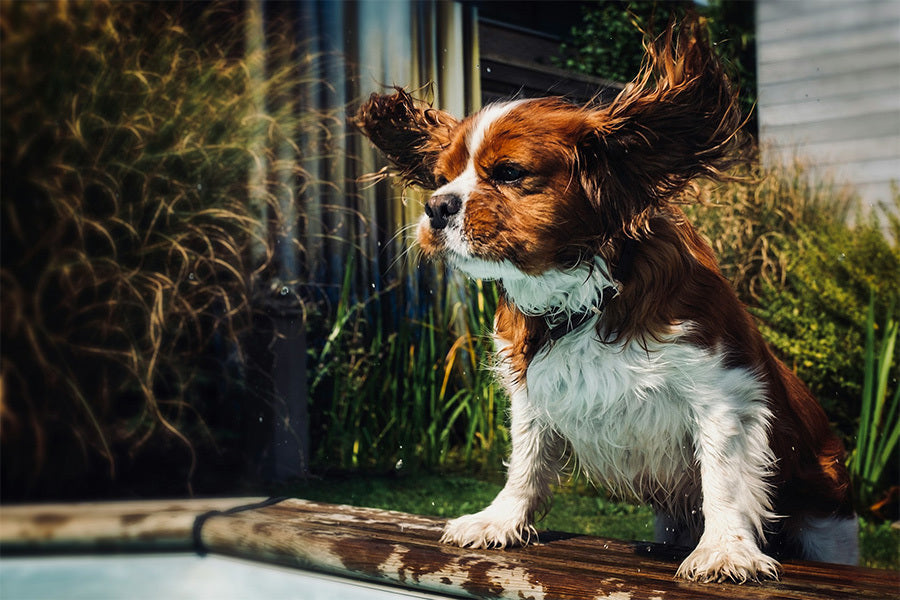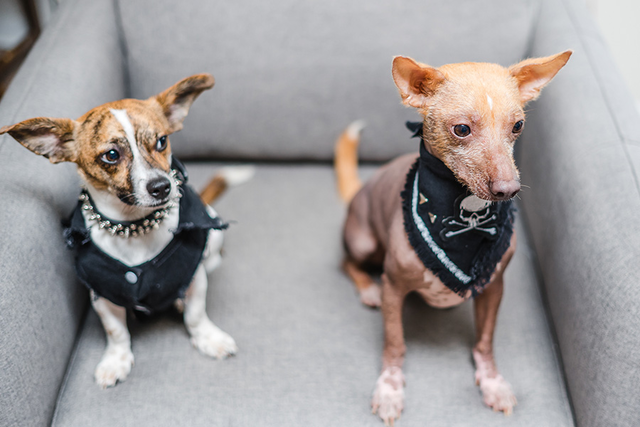Which Dogs Can't Handle Winter's Chill?

Discover the Breeds to Keep Indoors. When it comes to winter weather, not all dog breeds are created equal.
Some breeds have thick, insulating coats that allow them to thrive in cold temperatures, while others are more vulnerable to the chill.
Understanding which breeds fall into the latter category is crucial for pet owners, as it helps ensure that these dogs remain comfortable and safe during the colder months.
By recognizing the unique needs of cold-sensitive breeds, you can take proactive measures to protect them from harsh winter conditions, ultimately enhancing their well-being and happiness.
Why Knowing Cold-Sensitive Breeds Matters
Recognizing the breeds that struggle in winter is essential for ensuring their health and comfort. Breeds with short coats, minimal body fat, or those that are smaller in size often lack the necessary insulation to withstand frigid temperatures.
For instance, Greyhounds, with their sleek bodies and thin skin, can quickly become cold and uncomfortable, while Chihuahuas, despite their spirited personalities, are particularly sensitive to the cold due to their small stature.
Understanding these vulnerabilities allows pet owners to make informed decisions about their dogs' outdoor activities and living conditions during the winter months.
Understanding Cold Sensitivity in Dogs
How Cold Is Too Cold for Dogs?
When temperatures drop, it's important to recognize that dogs can experience discomfort just like humans. Generally, if the temperature falls below 32°F (0°C), many dogs may start to feel the effects of the cold, especially those with short hair or low body fat. Factors such as wind chill, moisture, and the duration of exposure can exacerbate these effects, making it crucial for pet owners to monitor their dogs closely. If you notice your dog shivering, lifting their paws off the ground, or seeking shelter, these are clear signs that they are too cold and need to be brought indoors or provided with adequate warmth.
Signs Your Dog Is Cold
Some additional breeds that are particularly sensitive to cold include the Italian Greyhound and the Dachshund. Italian Greyhounds, like their larger counterparts, have minimal body fat and a short coat, making them susceptible to chilly weather. Similarly, Dachshunds, with their elongated bodies and short legs, can struggle to maintain warmth, especially when snow or ice is present.
It's essential for owners of these breeds to provide them with warm clothing, such as dog sweaters or coats, and to limit their time outdoors during extreme cold spells. By being attentive to their needs, you can help ensure that these dogs remain comfortable and happy throughout the winter months.
Breeds That Struggle in Winter
-
Italian Greyhounds are known for their incredible speed and sleek bodies, but those same physical attributes can make them quite vulnerable in colder weather. With their short coats and little body fat, these dogs may feel the chill more intensely than other breeds. As a result, Italian Greyhounds aka Iggies, can struggle to stay comfortable when winter arrives, often requiring extra layers, like sweaters or coats, to keep them warm during outdoor walks.

-
Chihuahuas are one of the smallest dog breeds, and their diminutive size makes them particularly susceptible to harsh winter temperatures. Their thin coats do not provide adequate insulation against the cold, which means that they can easily become chilled during outdoor activities. Consequently, it's advisable for Chihuahua owners to invest in cozy jackets or sweaters to ensure that their small companions remain warm and comfortable when venturing outside during the winter months.

-
French Bulldogs, with their short noses and compact bodies, are not well-equipped to handle extremely cold weather. Their short, fine coats leave little protection from the elements, which can lead to discomfort and potential health issues if they are exposed to freezing temperatures for extended periods. To help French Bulldogs endure the winter season, owners should consider dressing them in warm clothing and limiting their time outside when it's particularly cold.

-
Yorkshire Terriers, often simply referred to as Yorkies, are a small breed with a beautiful, long coat that requires regular grooming. However, their small size and lightweight build can make them sensitive to cold weather. Because they do not have a thick undercoat to insulate them, Yorkies can get cold quickly in winter. For this reason, it is essential for their owners to provide adequate warmth through sweaters and limited exposure to outdoor elements during the colder months.

-
Basenjis are known for their unique yodel-like vocalization and their elegant, athletic bodies. However, despite their impressive agility, they have very short coats that offer little protection against cold weather. This breed can struggle significantly in winter conditions as they may feel cold more readily than other dogs with thicker fur. Proper winter attire, such as coats or sweaters, is crucial for these dogs to maintain their comfort during walks in the chilly season.

-
Whippet, Greyhounds are slender dogs with minimal body fat and short coats, which can make them uncomfortable in cold weather. While they are incredibly fast and agile athletes, their physical structure leaves them exposed to the chill. Owners should be mindful of this and consider outfitting their Whippets with warm clothing during walks in the winter, ensuring that their pets are happy and snug throughout the season.

-
Pugs are charming little dogs with distinctive wrinkled faces and compact builds, but they, too, have short coats that can leave them vulnerable in winter weather. While their playful nature makes them eager to explore outside, their short noses can cause breathing difficulties in extreme cold, which makes them less tolerant of low temperatures. To ensure that pugs remain warm and healthy during winter, their owners should provide snug sweaters and limit outdoor exposure when the weather is particularly harsh.

Tips for Keeping Your Dog Cozy in Winter
Doggy Bathroom Solutions
When it comes to keeping your dog comfortable during the winter months, there are several strategies you can employ. First and foremost, ensure that your home is warm and draft-free, providing a cozy space for your dog to relax. Consider using dog beds with insulating materials or blankets to help retain body heat.
Creating a designated indoor bathroom area can alleviate the need for prolonged outdoor exposure, especially during extreme cold spells. If your dog must go outside, try to schedule bathroom breaks during the warmest parts of the day and keep them brief. By taking these steps, you can help your cold-sensitive dog feel secure and comfortable throughout the winter season.
Indoor Activities to Keep Them Engaged
Engaging your dog in indoor activities is essential to keep them mentally stimulated and physically active during the winter months. Consider setting up a play area with interactive toys that challenge their problem-solving skills, such as puzzle feeders or treat-dispensing toys. You can also organize short training sessions to teach them new tricks or reinforce basic commands, which not only provides mental exercise but also strengthens your bond.
Playing games like hide-and-seek or tug-of-war can be a fun way to burn off energy without exposing your dog to the cold. By incorporating these activities into your routine, you can ensure that your dog remains happy and engaged, even when outdoor playtime is limited.
Conclusion
As winter approaches, it's vital for dog owners to be proactive in creating a warm and safe environment for their pets. This includes not only providing appropriate clothing but also ensuring that their living spaces are insulated from cold drafts. Regular grooming is also important, as matted fur can reduce insulation and trap moisture, making dogs even colder.
Additionally, consider investing in heated dog beds or blankets to provide extra warmth during the night. By taking these steps, you can help your cold-sensitive dog thrive during the winter months, keeping them comfortable and happy despite the chill outside.
For more helpful insights and information, check out our related blog posts here:



